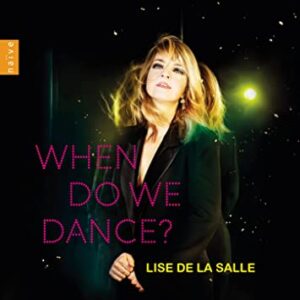Lise de la Salle’s “When Do We Dance?” presents a guided world tour of dance-inspired works, starting in the Unites States and Argentina, crossing the Atlantic to Spain, France, and Hungary, and winding up in Russia.
She begins with the title track, where she subjects George Gershwin’s syncopations to mincing and superfluous ritards. Next, a transcription of Art Tatum’s 1933 recording of Tea for Two, for which the composer Vincent Youmans is nowhere credited. I actually transcribed this recording for pianist Steven Mayer (who recorded it twice), although I suspect that de la Salle uses another less accurate transcription, because she plays one particular left-hand chord with the wrong harmony. Moreover, her square, sectionalized and persistently rounded-off phrasing misses the original Tatum recording’s scintillating force.
William Bolcom’s Graceful Ghost can do without this pianist’s expressive hairpins. Surprisingly, de la Salle gets down and dirty in the opening section of Fats Waller’s Viper’s Drag, yet her rhythmically inaccurate rendering of the main stride piano section swings not at all. Piazzolla’s ubiquitous Libertango also suffers from rhythmic arrhythmia, while the pianist’s stiff and heavy Falla Ritual Fire Dance never ignites. However, she serves up the three Ginastera Danzas argentinas to an idiomatic fare-thee-well.
The pianist’s transparent balances and shimmering sonority are exactly what Ravel’s Valse nobles et sentimentales require, despite some fanciful ritards and exaggerated short notes. But Saint-Saëns’ Valse Etude better absorbs such artifice in de la Salle’s suave hands, and her pointing up of details in Debussy’s Mazurka makes this piece sound more consequential than it is. She speaks Bartók’s Roumanian Folk Dances with a lurching accent, yet perfectly nails the acerbic style of Stravinsky’s Tango. She brings grace and subtlety to Scriabin’s Waltz in A-flat, thereby minimizing its rambling qualities. By contrast, Vyacheslav Gryaznov’s ingenious two-hand reduction of Rachmaninov’s Polka italienne for piano duet showcases de la Salle’s virtuosic glitter at its most persuasive.
So the question remains: “When do we dance?” My answer: Take to the floor when the pianist strikes up the Ginastera pieces and the Russian works. As for the rest, you can sit them out.
































